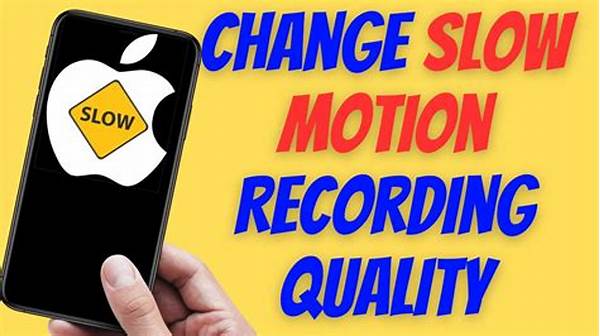In the fast-paced world of content creation, capturing the ideal shot can often feel like trying to hit a moving target—literally! But what if you could slow things down just enough to catch every eye-popping detail? Enter slow-motion video recording, a technique that can transform even the most mundane footage into a cinematic masterpiece. Imagine the splash of water droplets frozen mid-air during a summer rain or the graceful leap of a dancer captured in breathtaking detail. The possibilities are endless, and the outcome, irresistibly mesmerizing.
Read More : Portable Audiovisual Solutions For Outdoor Product Promotions
You’re not just limited to high-end equipment or movie sets to achieve this level of artistry. With advances in smartphone technology and affordable video editing software, anyone can become the auteur of their slow-motion saga. But, as with any art form, there is a right way and a wrong way to do it. Executing slow-motion video captures without understanding the rudimentary techniques is like driving a supercar without knowing how to shift gears. It’s powerful, but misused, can lead to a performance that’s less Oscar and more “Oops!” So, how do you master the techniques to correct slow-motion video recording? Let’s dive in.
Understanding the Essentials of Slow-Motion Video
The first step to nailing down techniques for correct slow-motion video recording is understanding what slow-motion is all about. Essentially, slow-motion captures more frames per second (fps) than standard video and then plays it back at a normal speed, harnessing the magic of time dilation to create stunning visual effects.
Why Frame Rate Matters
Frame rate is the backbone of slow-motion video. Traditionally, standard motion pictures are recorded at 24fps. For slow-motion, you’ll need to record at a higher frame rate—think 60fps, 120fps, or even 240fps—depending on how dramatic you want the slow-motion effect to be.
Frame Rate Compatibility
Make sure your device can handle the frame rates you’re aiming for. High frame rates consume considerable memory and processing power, so double-check your hardware capabilities before diving into your epic slow-motion production.
Setting the Scene: Lighting and Environment
Good lighting is essential for all types of video recording, particularly slow-motion. Since each frame is captured at a fraction of the standard exposure time, inadequate lighting can result in dark, grainy footage.
Mastering Light
Utilize natural light when possible or invest in softbox lights to ensure every frame is bright and crisp. Proper lighting can make a difference, elevating your footage from amateur to professional quality.
Environmental Considerations
Slow-motion has the ability to accentuate even the smallest details. Ensure your background doesn’t distract from the subject. Declutter your environment to keep the focus on what really matters.
Advanced Techniques: Stabilization and Editing
No list of techniques for correct slow-motion video recording would be complete without mentioning stabilization and editing.
Stabilization Techniques
A shaky camera can ruin even the most carefully designed slow-motion shot. Use tripods, gimbals, or built-in stabilization features on your device to ensure smooth recording.
Read More : Audio Visual History Sources Providing Voices To Marginalized Communities
The Art of Editing
Once you’ve captured your footage, the editing phase is where visual storytelling unfolds. Software like Adobe Premiere Pro or Final Cut Pro offers tools to fine-tune your slow-motion clips. You can adjust the speed, tweak the colors, and add sound effects to enhance the drama of your scenes.
Tips and Tricks: Capturing the Perfect Shot
Exploring additional techniques will put you ahead in your slow-motion journey.
Experiment with Angles
Unusual angles can provide fresh perspectives. For example, filming from below can make actions look more monumental and impactful.
Timing is Everything
Observe your subjects closely and press record at just the right moment to ensure that your slow-motion highlights are nothing short of perfect.
Conclusion
Mastering techniques for correct slow-motion video recording may seem daunting, but with practice and a sprinkle of creativity, the process can become exhilarating. Understanding frame rates, mastering lighting, embracing stability, and diving into the world of editing are just stepping stones on your journey to creating mesmerizing slow-motion videos. Whether your goal is to capture the delicate flutter of a butterfly’s wings or the powerful splash of a swimmer diving into a pool, these techniques can help you slow time and capture your vision in stunning detail.
By incorporating these techniques into your filmmaking repertoire, you’re not just capturing moments; you’re creating lasting impressions, telling stories that captivate your audience. So grab your camera, check your settings, and let your creativity flow in slow motion.
